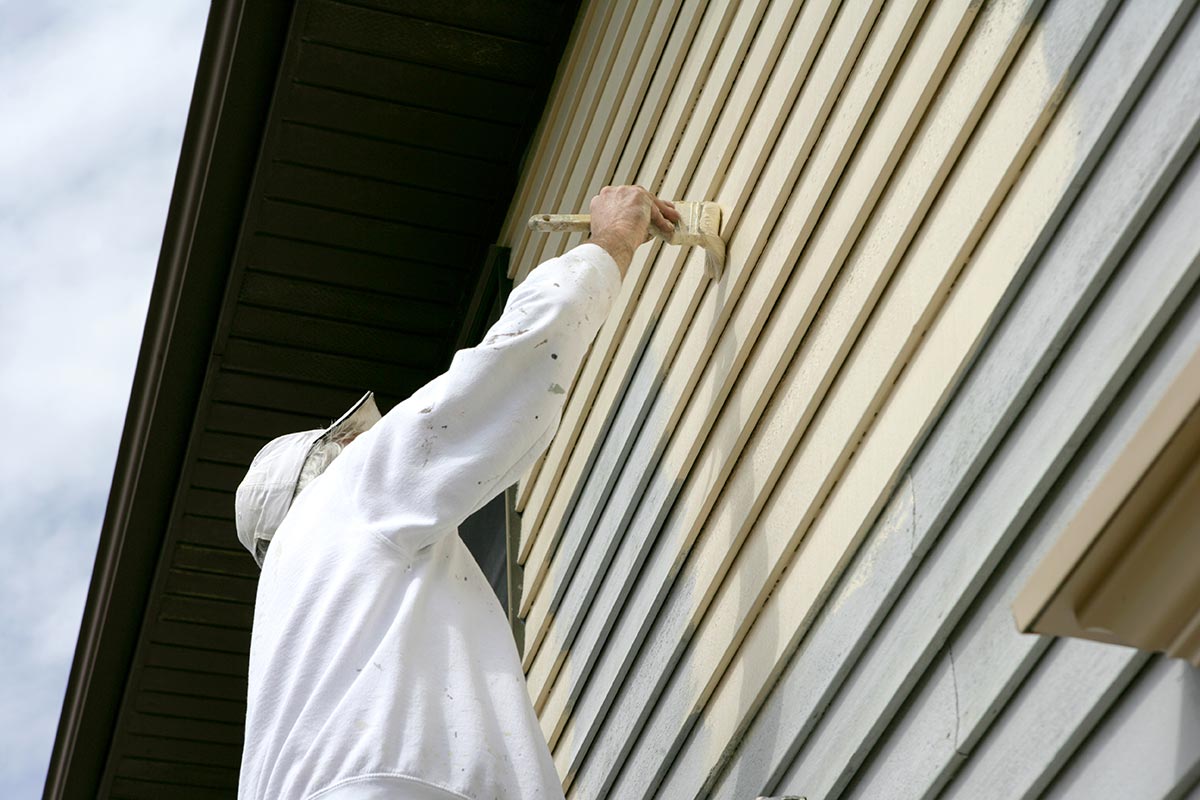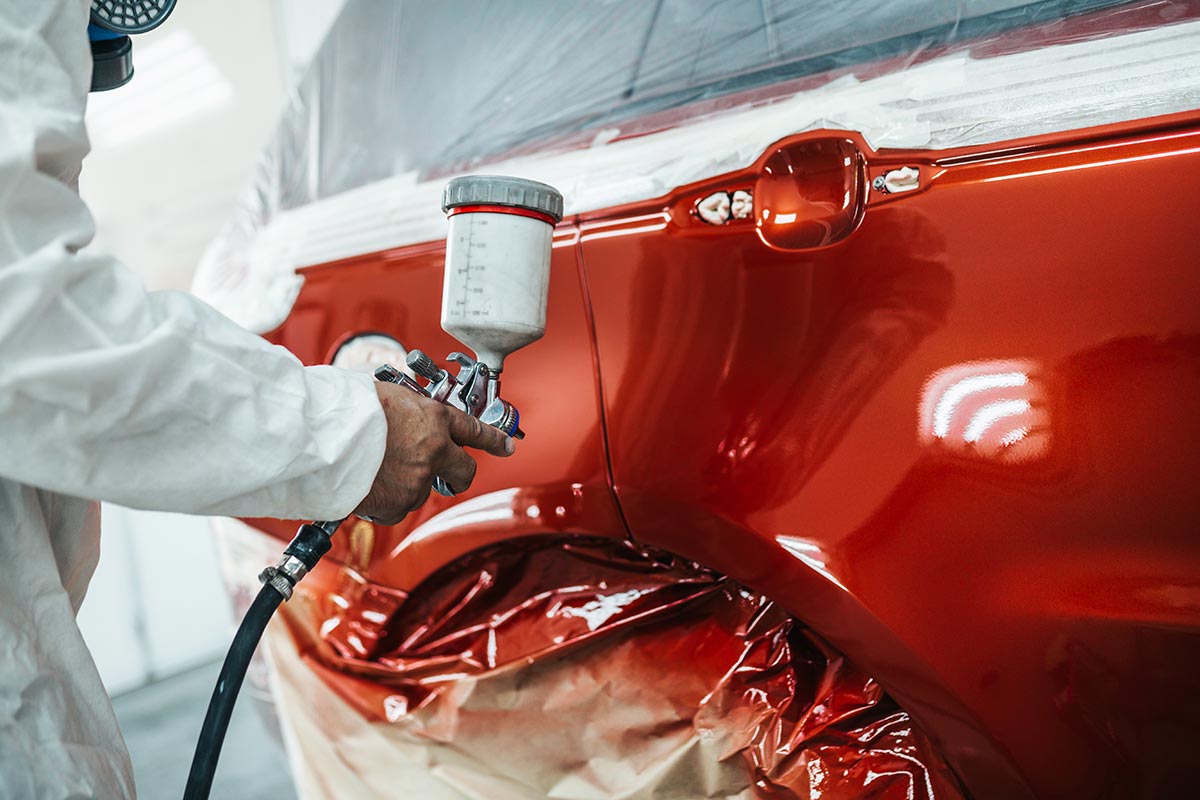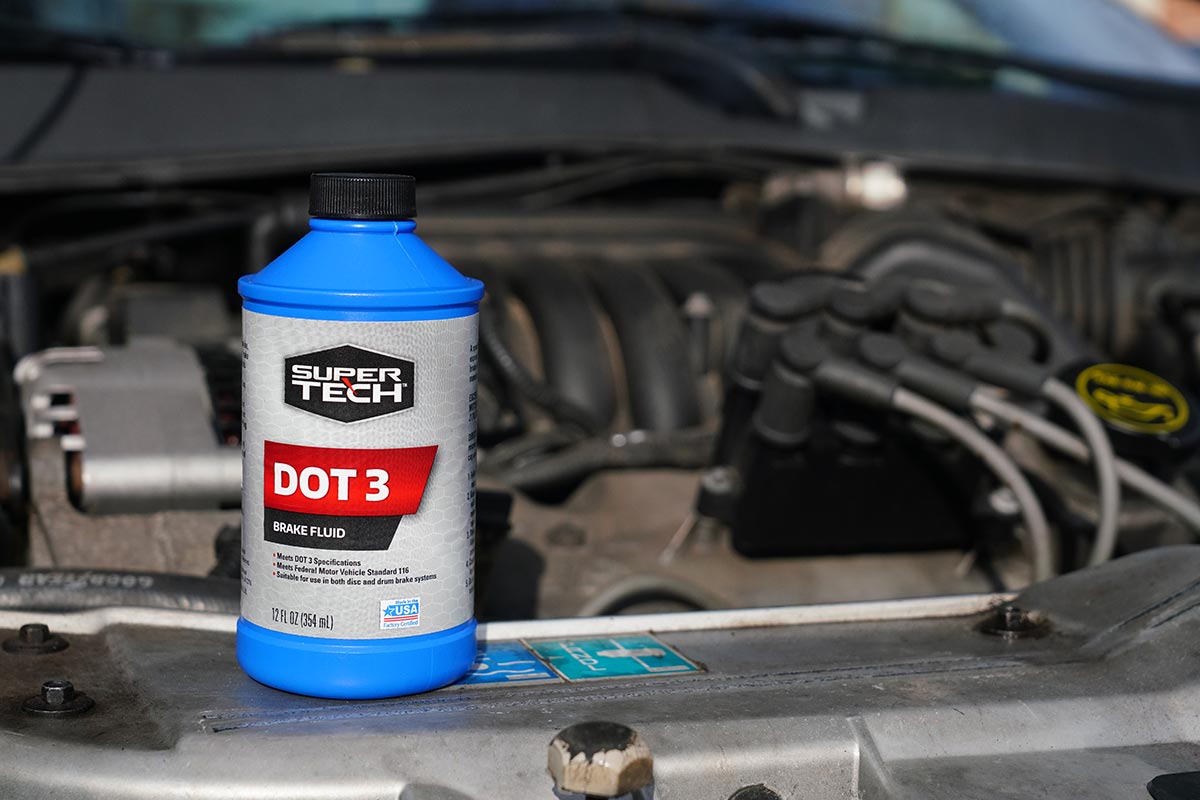Exterior paint helps to ensure that cars are well kept. But what kind of paint should you use on your car? Is using exterior house paint an option? To answer your question we asked automobile experts and here's what we learned.
Painting a car with exterior house paint is not the best suited for your car as you won't get a factory finish. House paint isn’t formulated to bond with metal or automotive lacquer and with temperature extremes and moisture, it could start to peel off sooner than later.
As you read further down this post, we would explain in more detail all you need to know with regards to car painting and the appropriate paint you should use.

What is Exterior House Paint Made Of?
Exterior house paints are applied to a building's outer layers. They have the capacity to be firm against rain, snow, and any other inclement weather. Plus, the tough nature withstands the sun's rays which protects against fading or cracking.
Owing to the nature of the paint, its properties, and its exposure to various weather conditions, it provides protection against moisture caused by rain and snow and ultraviolet radiation caused by sunlight. The following are exterior house paint ingredients:
- Solvents: Solvents are quick-evaporating liquids that keep binders and pigments suspended.
- Pigments: They are powdered minerals and synthetic colors that give paint color and opaqueness.
- Additives: Among other things, these control dry time, leveling, and mildew.
- Binders: Resins (soft resins used in exterior paints) combine to form the paint film after the solvents evaporate.
Can You Paint a Car With an Exterior House Paint?

Can you paint a car with exterior house paint? You can paint a car with house paint, but this wouldn't be ideal because the chemicals used in producing house paint can't bond easily with metal.
Sooner or later the paint would eventually peel or wash off. Especially when exposed to rain or other elements of weather.
What Kind of Paint Can I Use to Paint My Car?
The following are basic types of car paint: lacquer, urethane, and enamel.
Lacquer
These are very old paint colors that are no longer used on new vehicles. Lacquer paint is best used when restoring an older vehicle to match the original finish. To achieve the same level of shine as newer paint types, a greater amount of handwork is required.
Urethane Paint
Urethane paint is the most widely available paint on the market. Because it is available in any color, it can be combined to meet your needs and color palette. Furthermore, urethane paint is far more resistant to UV damage than any other type of paint, including older paints.
Its finishes always necessitate the use of a hardener, which causes them to dry quickly and solidly. The disadvantage of this type of paint is the pain associated with it, which must be used or disposed of quickly, and the hardener is toxic.
Check out the House of Kolor Urethane Paint on Amazon.
Enamel Paint

This type of paint is further classified into two types: synthetic enamel and acrylic enamel synthetic. These paints should be considered utility-grade paint.
It is typically only available in basic premixed colors and is frequently used in situations where the paint does not need to last long or will not be subjected to harsh conditions.
Synthetic enamel is a one-stage paint that does not require the addition of a hardener or baking. Acrylic enamel paints are frequently used with a hardener to increase durability and reduce drying time.
Do NOT Paint Silly String On Your Car
Silly string is notorious for staining vehicle surfaces and leaving behind unsightly, heavily faded sections of clear coat. The cause of this issue stems from the resins and chemical-rich colorings contained within a silly string, both of which are prone to causing even more damage when they harden.
When left to bake in the hot sun, or on areas of an automobile that are high in temperature, like the hood or headlights, silly string turns into a marring material with lasting repercussion.
How Do You Do a Homemade Paint Job On a Car?

The following are steps one can take in painting a car at home.
- Step 1: Ensure that the car is properly cleaned in order to remove rust, dent, and grime beneath the trim (carefully remove the trim as needed)
- Step 2: Lightly sand the exterior surfaces to be painted
- Step 3: Make use of masking tape to cover areas not intended for paint
- Step 4: Prime the surface
- Step 5: Ensure you allow curing time for the primer
- Step 6: Lightly sand the exterior surface again
- Step 7: Clean the primed, sanded surface with a towel to remove dust
- Step 8: Apply the paint in thin, even coats with a side-to-side sweeping motion while holding your spray gun 6 inches away from the surface of your vehicle. Three to four coats are usually needed to fully cover the surface.
- Step 9: Sand the surfaces again before applying the final coat to clear any powdery residue, then wipe clean with a towel
- Step 10: Apply a clear coat of lacquer using the same painting technique
- Step 11: While the clear coat is still wet, remove the masking tape and allow it to dry
- Step 12: Finish your paint job by leveling out all painted surfaces in circular motions
Can I Paint My Car With Acrylic Paint
Acrylic paint is simple to use for those who prefer to paint their cars themselves. It is extremely simple to use and apply. This type of painting requires little experience or skill. Acrylic paint is also known for its ability to last a long time on your vehicle.
What Will Ruin Car Paint?
It is critical for a car owner to understand what removes paint from a car. This will help to keep your vehicle looking like new and can help to increase its resale value. In case you need to sell it later on. The following items can damage car paint:
Accidents
Chips and dings from accidents can scuff your paint. Any collision repair technician will tell you that there are a few commonplace substances that can deteriorate your paint and cause damage, and being in an accident is one of them.
Vandalism is another source of exterior damage. Small scratches or graffiti can detract from the vehicle's beautiful finish.
Brake Fluid

When used on non-silicone-based paints, brake fluids can act as a paint thinner, removing the coating and causing the paint to peel. Not all brake fluids are the same, and some may not have the same effect on your vehicle.
However, when using brake fluid near your vehicle, you should always proceed with caution.
Petrol
When filling your tank, be very careful not to leak fuel on the body of the car; the gas will evaporate and no trace of any damage will be visible at first, but it can leave behind stains that are extremely difficult to remove.
Using Filthy Rags/Towels
Using dirty rags/towels to clean your vehicle can cause damage. Instead of using dirty rags that may contain particles that are harmful to your car, use clean rags.
Dirty towels can pick up dirt and tiny particles that can scratch your car's finish. This may go unnoticed at first, but scratches can accumulate over time and become more visible.
Can I Use Spray Paint to Paint My Car?

Spray painting is a low-cost method of painting a car. A proper automotive paint job entails more than simply aiming and spraying. There are some drawbacks to spray paint.
It Takes a Long Time
The process of spray painting is time-consuming. Spray cans release paint at the pace set by their incredibly cheap nozzles, which are not assured to flow at the same rate or produce the same spray pattern.
A constant, carefully measured flow is provided by professional paint guns that use compressed air to paint an automobile. This will result in more spray paint being applied to any one area of your car.
Mismatched Colors
Since spray paint color quality control is done in batches and you have no way of knowing if the cans at the store came from the same batch until you start spraying. it is not always guaranteed that the color in the paint can match the one on the shelf.
Clogged Nozzles
The nozzle of a spray paint clogs if it is held down for more than 15 seconds. The end product is a mess that drips. Because their nozzles are made for shorter or lesser applications, they cannot constantly blast paint until the container is empty.
Summary
We'd recommend consulting an expert to paint your car with the appropriate type of paint. You can also do this at home as long as you use the right product.



